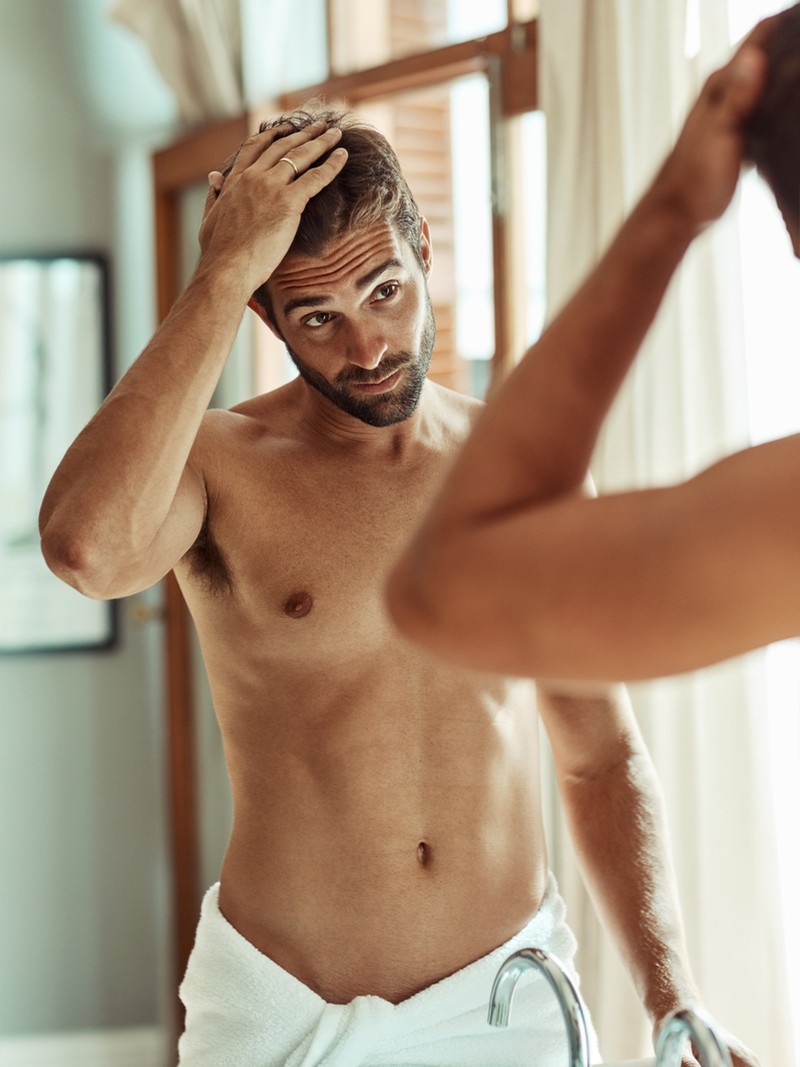7 Ways To Help Thinning Hair
THE SIGNS
“Hair thinning is usually the first step in the process of hair loss so it’s crucial to be seen by an expert as soon as possible so they can diagnose and come up with an individual treatment plan,” explains Dr Bessam Farjo, hair transplant surgeon at Farjo Hair Institute. “The hair starts to miniaturise both in quality and in length of process, which has the potential to continue to get worse until there is no more growth and baldness is apparent. Thinning can be stopped and possibly reversed, whereas complete hair loss will need surgery.”
“A certain degree of density change is expected as we age,” says Anabel Kingsley, trichologist and brand president at Philip Kingsley. “Our hair follicles and scalp are not immune to ageing and, like our skin, the quality of our hair and scalp deteriorates. The degree of change is largely dependent on genes.”
While male pattern hair loss (MPHL) can technically begin anywhere on the head, most men find it starts around the hairline or at the crown. If your hair is thinning, you’re also likely to notice a decline in density of the actual hair itself.
THE CAUSES
You might assume that if your hair is thinning, it will lead to hair loss. While that is often the case, there are conditions like TE (telogen effluvium, or excessive daily hair shedding) which can cause changes in your hair. “This can be triggered by stress, poor eating habits, vitamin and mineral deficiencies, rapid weight loss, a flaky scalp, surgery, the flu and high fevers,” says Anabel. “Unlike male pattern hair loss, TE is usually transient and stops once the underlying cause is found and treated.”
THE SOLUTIONS
Micro Needling
At the more affordable end of the hair-loss treatment spectrum, micro needling can easily be slotted into your regular grooming regime. All you need is an at-home roller tool (Amazon has a good selection) which is covered in hundreds of tiny needles. When rolled over your scalp, these needles puncture the surface, causing hundreds of tiny injuries to the skin. This causes just enough damage to stimulate the body’s healing response and kickstart some regenerative functions that include pumping out growth factors that can help hair to grow.
LED Therapy
At the other end of the affordability spectrum, LED therapy – specifically red-light therapy – is widely acknowledged to be worth trying. The best devices should have a wavelength of red light between 620-678nm, as that’s what’s required to reach the bulge cells at the base of hair follicles that are responsible for growth and regeneration. Current Body’s LED Hair Growth Helmet has clinical studies behind it which attest to its ability to improve thickness and stimulate 126% more growth than topical, laser and supplement treatments alone. You’ll need to use it for ten minutes every day for 16 weeks, but you might consider that a small price to pay for denser hair in the long term.
Massages
A head massage isn’t just a relaxing extra to tag onto your regular trim. Studies have shown that daily head massages can not only increase the density of the hair but also aid regrowth. They work by stretching the cells of the follicles themselves (which stimulates them to produce thicker, stronger hair) and by increasing good blood flow to the follicles (which is needed to deliver both oxygen and hair-building nutrients). Again, you’ll need to put in the hours to make a difference, but the massage doesn’t have to be manual. There are several devices on the market that can do the arm work for you. For example, Grow Back’s Scalp Hero not only has three massaging functions – it also has a red light setting to maximise the benefits.
Shampoos
What you use in your morning shower can make a difference to the quality and quantity of your hair. Instead of reaching for whatever shampoo is closest, it might be time to take a more considered approach. Launching on 1st May, Sisley’s Hair Rituel Fortifying Densifying Shampoo promises to be worth the wait as it’s specifically designed to address thinning hair. In it are baobab proteins (which increase the protein content in fine and thinning hair) and ceramide analogues (ceramide derivatives which hydrate and moisturise the hair and improve its condition). If you can’t wait that long, the same brand’s Revitalising Fortifying Serum is clinically proven to stimulate the hair bulb and improve density, strength and shine.
Supplements
Minoxidil and finasteride are two ingredients that have plenty of research and proven efficacy behind them. “Minoxidil stimulates hair growth and helps to prolong the anagen (growth) phase of the hair growth cycle – which shortens with MPHL,” says Anabel. “Finasteride is a 5 alpha reductase inhibitor that helps to prevent testosterone from converting to the hair-damaging dihydrotestosterone (DHT).” Both are available in prescription drop form at the Philip Kingsley Clinic in London or from online hair loss specialists such as Sons and Numan.
Vitamins
“Hair is non-essential tissue, so it is the first part of you to suffer when your diet is lacking and the last part of you to receive nutrients,” explains Anabel. One of the most common exacerbating factors for hair thinning in men is a vitamin D deficiency. High stress levels and not eating a balanced, nutrient-dense diet can also contribute, so eat plenty of proteins, complex carbohydrates, vitamin B12 and iron.
Styling Tips
Sometimes a styling trick that can conceal thinness is all that’s required. “A great hair cut really helps,” says stylist George Northwood, “so investing in a quality, regular cut is important. Keep it on the shorter side too as the shorter it is the thicker it looks.” It’s also good to try and balance your hair out around your head. “Asking your hairdresser to take the weight out of the sides and back can make the top seem thicker,” he adds.
When it comes to product, choose carefully as anything too shiny and wet look will only draw attention to the thinness of your strands. “A matte clay or a fine powder is your best bet,” advises George, who rates Redken Powder Grip for the way it adds volume and texture. “If you’ve got waves or curls, then embrace them,” he says, adding that the texture they provide can be useful in masking thinner areas. Try his own Moisturising Cream for a little light grip and definition.
SHOP THE PRODUCT EDIT
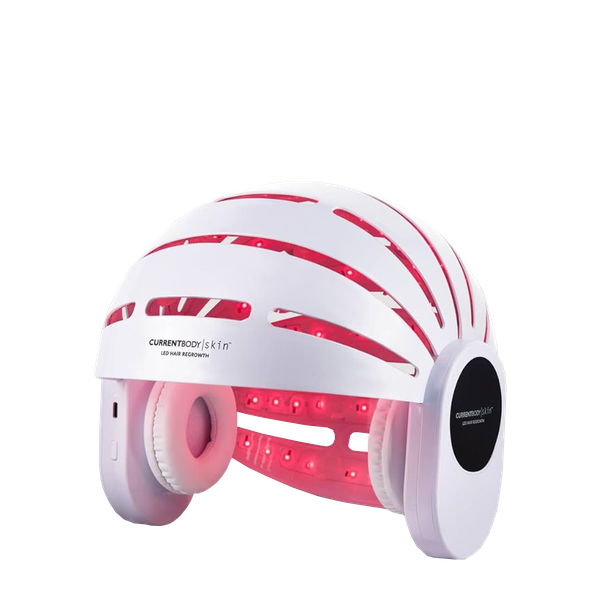
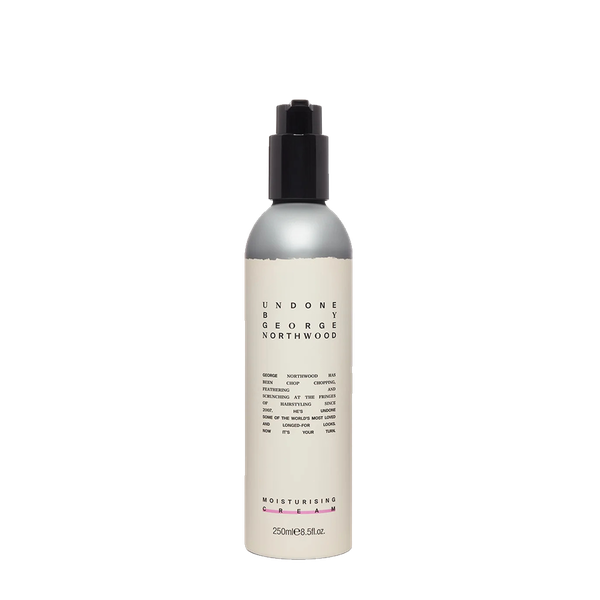
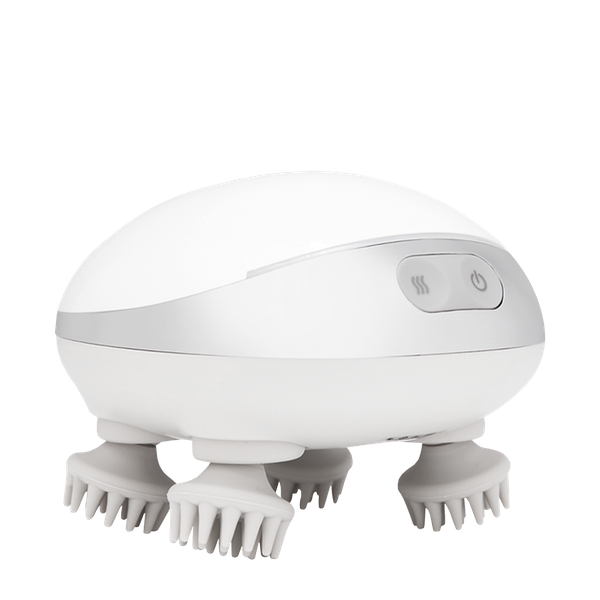
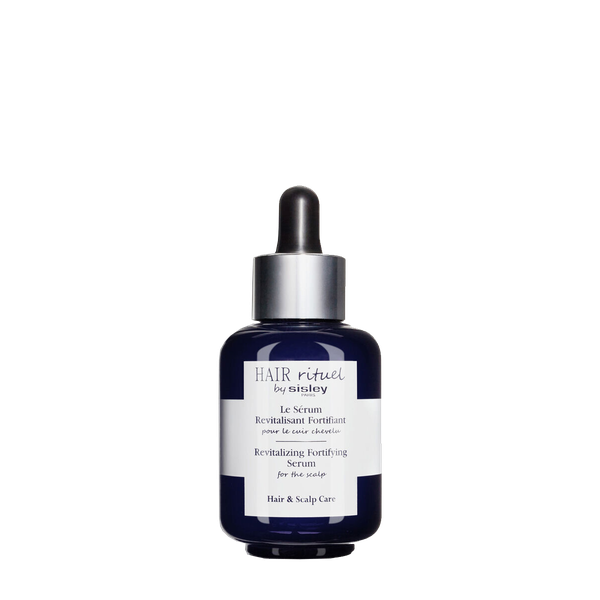
All products on this page have been selected by our editorial team, however we may make commission on some products.
DISCLAIMER: We endeavour to always credit the correct original source of every image we use. If you think a credit may be incorrect, please contact us at [email protected].
